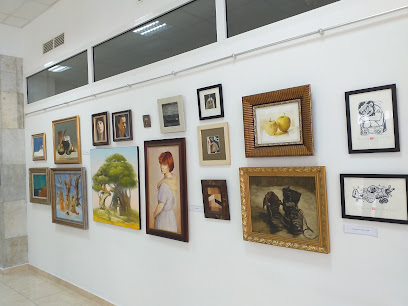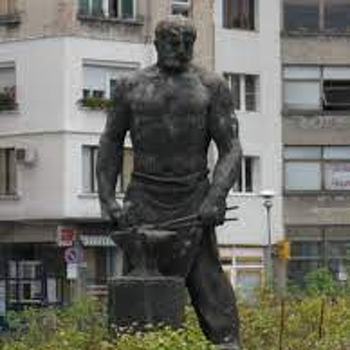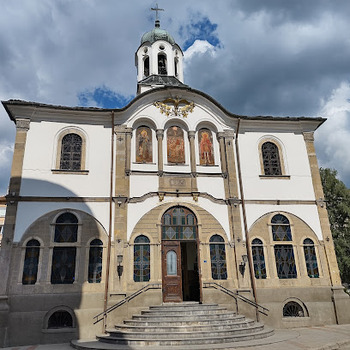Art Gallery Hristo Tsokev
Overview
Hristo Tsokev Art Gallery was opened on September 5, 1962 and initially functioned as an art department at the Historical Museum - Gabrovo, and in 1974 became an independent institution with its own building. It is named after one of the first Bulgarian artists with an academic education, a graduate of the Moscow Art School. The history of the gallery is connected with names such as Kancho Tsanev, Mincho Minchev, Mityo Solakov, Nikola Nikolov, Svetlin Rusev and a number of other famous Bulgarian artists. Works by Anton Mitov, Vasil Stoilov, Vladimir Dimitrov - The Master, Georgi Bozhilov - Slona, Ivan Markvichka, David Peretz, Dechko Uzunov, Dimitar Gudzhenov, Zlatyo Boyadzhiev, Naiden Petkov, Nenko Balkanski, Nikola Tanev, Konstantin can be seen in the representative exposition. Tringov, Hristo Tsokev, Tsanko Lavrenov, Yaroslav Veshin and a number of other prominent Bulgarian authors. Also of interest are the sculptures included in the exhibition of authors such as Angel Stanev, Andrey Nikolov, Vezhdi Rashidov, Margarita Pueva, Mityo Solakov, Pavel Koychev and others. The art gallery hosts four traditional exhibitions: Spring Salon of Women Artists; Exhibition dedicated to the day of Gabrovo; Autumn Salon and Annual Exhibition of Gabrovo Artists. Hristo Tsokev Art Gallery is the organizer of the International Plein Air on Painting "Bozhentsi" and the National Triennial of Painting "Bridges". Hristo Ivanov Tsokev-Painter is the first artist from Gabrovo with a special education. Subsequently, he became one of the first talented and well-educated Bulgarian artists from the pre-liberation era. He received his primary education at the Gabrovo School. As a young child, he left with a group of Gabrovo pilgrims for Mount Athos. He remained in the Hilendar Monastery in 1859 as a novice and showed an interest in painting. He helps icon painters there who notice his gifts. After some time spent in the holy lands, thanks to a Russian pilgrim, he left for Russia. From 1860 he was a student at the Kiev Theological Seminary and accepted a monastic order under the name of Haralampius, which he renounced in 1867 when he entered the Moscow School of Painting, Sculpture and Architecture. In the late 1860s he completed it successfully. Under the name Dimitar Ioanov he studied with V.V. Pukiryov, P.A. Desyatov, S.K. Zaryanko and V.G. Petrov. He graduated in 1873.
The same year he visited Odessa and returned to Gabrovo. Here he painted portraits of his fellow citizens, painted icons for churches and monasteries. The nickname The Painter dates back to that time, which replaced his surname Tsokev. In 1874 he married.
He took an active part in organizing the Stara Zagora Uprising (1875). After his pogrom in 1875, the young artist was invited to paint icons in the church "St. St. Cyril and Methodius ”in Svishtov. He leaves with his brother-in-law and they decide to take a shortcut. In the Kara Chala area, the two passengers were attacked by two armed Turks and robbed. Since they could not find money in them, the Turks took the artist's tarpaulin and boots. After plenty of swearing and insults, they left. Deeply outraged by the experience, Tsokev remembered the image of one of the kidnappers and painted it. According to this drawing, the two robbers were found and captured. This story has been told for many years in Gabrovo.
He and his wife left for Svishtov. Until the end of 1875 Tsokev painted. Then, persecuted by the Turks, he emigrated with his wife to Giurgiu. He remained there until the Liberation, all the while painting portraits and icons for the churches in Giurgiu, Alexandria and others. Romanian towns and villages. At the same time he developed an active revolutionary activity as a founder and member of the Giurgiu branch of the Bulgarian Central Charitable Society. During the Russo-Turkish War he was an artist in the Russian army.
In 1879 he returned to Gabrovo. On November 15, 1879 he was appointed a teacher of drawing and painting at the newly opened Gabrovo High School. In his free time he painted portraits and icons again.
Hristo Tsokev is applying for a teacher at the Sofia High School. The painting he sent to participate in the competition was approved. But due to deteriorating health, he resigned from the teaching position. He taught at the Gabrovo High School for another 4 years.
· His earliest works are from 1867 - "Portrait of an Old Monk" (NHG) and "Archimandrite Arseniy Moskvin" (NHG).
· Several portraits painted by him are in the Sofia Museum, transferred by his wife.
· During the study, in addition to the drawing sketches on plaster antique heads and whole figures, from the time of the artistic study there are also male acts of nature, in which he shows a picturesque gift and professional skill.
· From his studies in Moscow the most famous works are "Ruskinche", "Self-portrait", "Man with orders", "Etude of a young man".
· Influenced by the work of great Russian artists, he created works such as "Old Woman", "Nun", "Smoker", "Russian Peasant Girl". Created in 1872, they are one of the earliest works in Bulgarian folk painting.
· Around 1872 he painted the landscape "Forest" - one of the first independent landscapes in Bulgarian painting.
· In Odessa he painted the realistic portrait of Mikhail Karolev / 1873 /.
Recommended
- Museum House of humor and satire
- Planetarium
- Monument to Racho Kovacha
- Dechkova house
- Gabrovo Zoo
- Interactive Museum of Industry
- Museum of History
- National Museum of Education
- Art Gallery
- Gradishte Fortress and others


 Bulgarian
Bulgarian Romanian
Romanian




